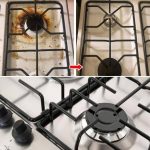ADVERTISEMENT
Clogged Shower Drain: The Right Way to Clean It
Identify the Problem
Before you proceed with any procedure, it is important to understand the nature of the problem. A clogged drain can be caused by a variety of factors, including hair buildup, soap scum, dirt, or debris blocking the flow of water. The problem can often be solved with simple preventative measures or self-intervention.
Preparatory steps
Wear protective gloves: Before you start working on the drain, it is recommended that you wear gloves to protect your hands from dirt and chemicals that may be used.
Remove the drain grate: Many showers are equipped with a grate that can be removed manually. Removing it makes it easier to access the area around the drain and allows for better cleaning.
Cleaning methods
Manual cleaning: Using tweezers or a pipe cleaner, you can manually remove dirt and hair that has accumulated around the drain. This is an effective method when the structure is relatively flat.
Baking soda and vinegar: This natural method effectively dissolves grease deposits and soap scum. Pour a cup of baking soda down the drain, then slowly pour in a cup of vinegar. Let it sit for about half an hour, then rinse with warm water.
Using a pressure washer: A hand-held pressure washer or small drain snake can be used to expel or remove debris that is clogging the drain.
Drain cleaning chemicals: There are many specialty drain cleaning chemicals on the market. One of the most effective is caustic soda. However, it is important to use it with caution and follow the manufacturer’s instructions carefully as it can be corrosive and damage drains if used excessively.
Future prevention
Once the drain has been cleaned, it is helpful to take preventative measures to prevent it from becoming clogged again. This includes using drain screens that catch hair and debris before they reach the drainage system, as well as regularly using drain cleaning products to prevent build-up and build-up.
In summary, unclogging a clogged shower drain may seem like a daunting task, but with the right tools and methods, it is a task that you can successfully accomplish on your own. However, if the problem persists despite DIY attempts, you may need to consult a professional to investigate more serious issues in your plumbing system.
ADVERTISEMENT




